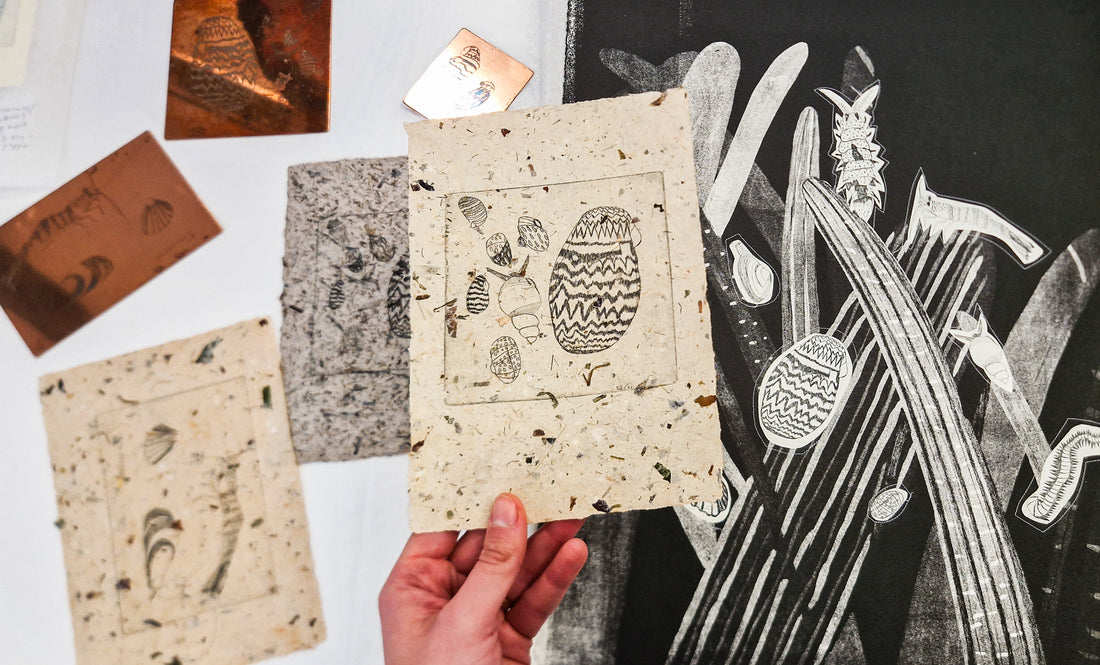Katja Syrjä’s artistic process follows the cycles of nature. Her working method is reminiscent of research and includes the production of her own dyes from natural materials such as soil and minerals and her own paper from e.g. bladderwrack and shortspike watermilfoil.
“Growing up in Uusikaupunki, I’ve loved the archipelago since I was a child, cruising around the island world in dad’s boat. The unique archipelago nature is the biggest source of inspiration for my art, which also involves a natural science and cultural history perspective,” Katja says.

She immerses herself in an archipelago plant or phenomenon for a long time. Reed was a theme for five years. Currently, the underwater world attracts, and she has collaborated with researchers at the Husö biological station, among others.
“I discovered eelgrass around 2015 via a lecture by marine biologist Christoffer Boström and was completely captivated by this plant, which is so important to the Baltic Sea. I wanted to explore it more, which led to the 30 m² glass mosaic Sea meadows in the Mariehamn bath house. It’s nice to now also be able to show and spread knowledge about eelgrass through the stamp,” Katja smiles.
Katja creates her artworks with stone lithography. The image is drawn on an old limestone and, through the chemical process, it is printed on the paper.
“Stone lithography offers so many possibilities and variations, giving an entirely different feeling than drawing on paper. I created the stamp by planographic printing. I drew and etched the small animals of the stamp issue on six copper plates, printed, and sewed them into the original stamp,” Katja describes the process.


She drew close to 15 different species for the issue, including bristle worm, Baltic isopod, molluscs, gastropods and shrimp.
“A fascinating number of different species live in the eelgrass beds. I found many nice shapes and patterns among them.”
She currently explores the colour palette of Åland nature, working on extracting an Åland indigo dye from the woad plant.
“The work process is an important part of my art. The material conveys an essential message. Therefore, I often integrate it into my exhibitions in the form of photos or videos,” Katja says.


